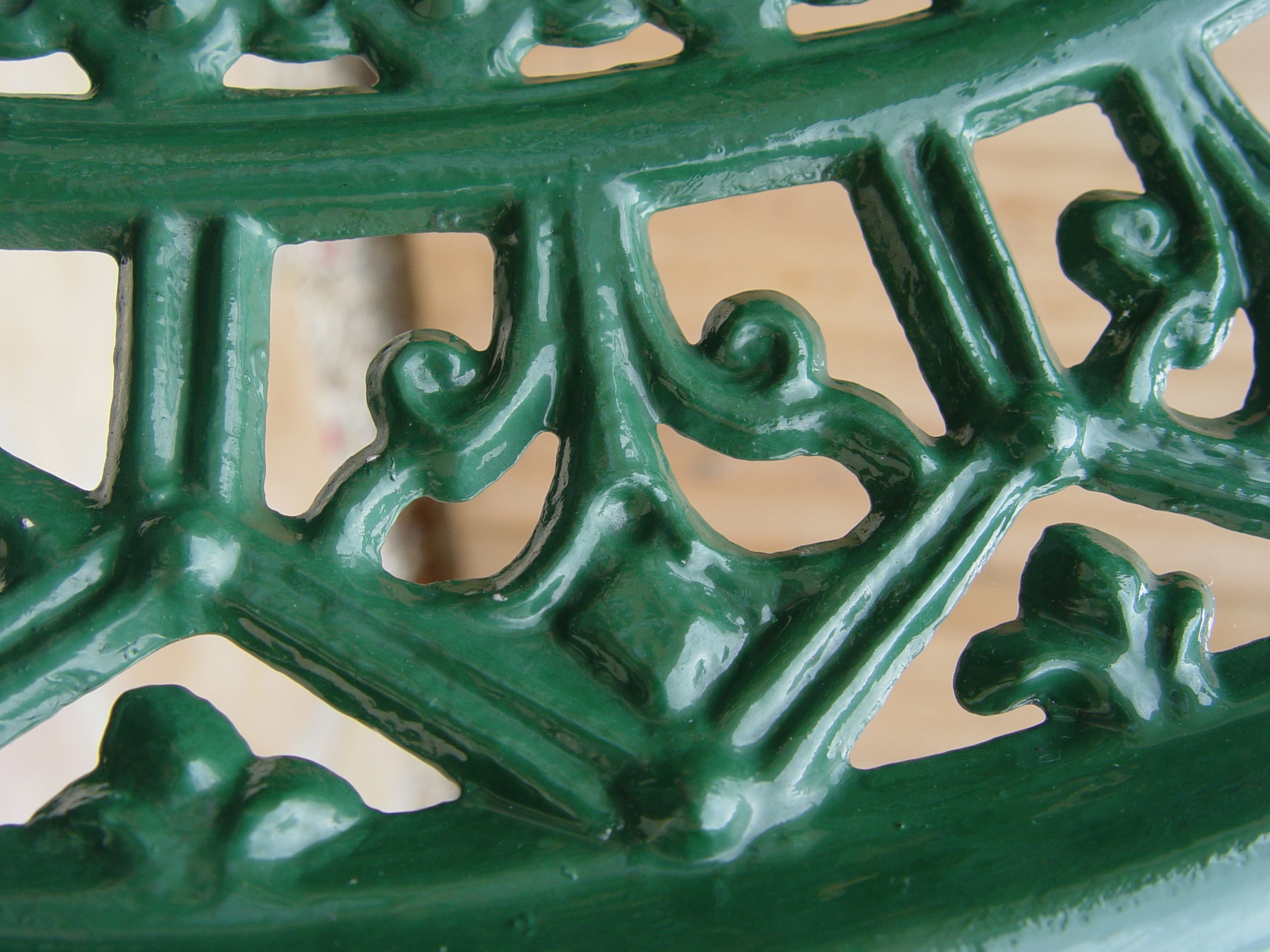
Five Star Painting shares the best way to remove paint from metal surfaces.
|
You have been looking at that faded metal chair on your deck for a few weeks now and finally decided it’s time to either paint it or replace it. You’re leaning towards painting it, but aren’t confident about the best way to get it done. One of the biggest questions you’re probably asking yourself is, “How do I remove paint from metal?”
This is a common question, and luckily, we have some answers that should give you the confidence needed to take on this DIY project. We’ll walk you through a few of the best ways to remove paint from metal, including tips on which tools and supplies you will need.
Removing Paint from Metal
There are several ways to remove paint from metal, so let’s look at a few of the more common options and the best way to use them.
Removing Paint from Metal with Baking Soda
Baking soda is a cleaning agent that is commonly used throughout many homes. What you may not have known is it can also be used to remove paint from metal.
To remove paint from smaller metal items, combine water with baking soda in a 16:1 ratio (1 qt water with ¼ cup of baking soda). Bring the solution to a gentle boil and place your metal item in the solution for 15 minutes. (If your metal item is too large to boil, there are other options to consider).
Once the item has been submerged for at least 15 minutes, remove it. You should be able to remove any remaining paint relatively easily. Using a common household cleaner like baking soda to remove paint from metal may raise the question, will vinegar remove paint from metal? Yes, it will. In fact, you can substitute vinegar for baking soda and achieve similar results.
Best Used For: Small items like door hinges, tools that accidentally got paint on them, etc.
Removing Paint from Metal with a Paint Stripper
If you have an item that is too big to boil, a paint stripper is a more viable option. Paint stripper can be purchased at your local hardware or home improvement store. You can apply using either a brush or a rag. Since the paint stripper is chemically based, make sure the area where you are working is properly ventilated. Ideally, it’s best to apply a paint stripper outside where ventilation is not an issue. This method is one of the best ways to remove spray paint from metal.
Best Used For: Bigger items, outdoor items, spray paint, fixed items.
Removing Paint with a Heat Gun
Another effective method for removing paint from metal is with a heat gun. Applying heat to the metal surface should help you remove the paint with minimal effort. As the paint is heated, it should begin to crack and peel. As this happens, use a scraper or wire brush to remove the peeling paint from the metal surface. To minimize the risk of injury, it’s best to wear protective goggles and gloves during this process. Also, once the old paint has been removed, do not attempt to apply a new coat of paint until the metal surface has cooled completely.
Best Used For: Small to medium size items. Also, for targeting small areas on larger items.
Removing Paint with an Angle Grinder
One of the quickest and easiest methods to remove paint from metal is with a grinder because the machine will do most of the work for you. Since you’ll be using a power tool, make sure to wear proper safety gear (eye protection and gloves), and select a grinding disk that will not damage the metal beneath the paint.
There are a variety of different grinder attachments that can get the job done. A wire wheel is very effective, but will also throw off the most debris. Therefore, it’s best to start with a less aggressive method. To start, try using a flap disc, which is available in a variety of different grits (abrasiveness). Once you get started, you can always change to a coarser grit, or wire based on results.
Best Used For: Large, sturdy surfaces (this method isn’t a detailed process).
Contact Five Star Painting
Hopefully, our tips above will help you take on this DIY paint project with confidence. When it comes to those bigger paint projects, you can have confidence in your local painting pros at Five Star Painting. We are the experts when it comes to interior and exterior painting. To learn more, give us a call or request a free estimate online today!
FAQs About Removing Paint from Metal
Our years of experience, attention to detail, and decades-long commitment to exceptional customer service set Five Star Painting apart from the competition. Continuing this high standard also includes using our knowledge and experience to answer your most frequently asked questions about removing paint from metal.
What’s the easiest way to remove paint from tools?
The easiest and least expensive method of removing paint from metal tools and hardware involves boiling them in water with baking soda, but there are other options as well.
Boiling tools in water and baking soda is a simple, effective, and safe solution that requires minimal supplies: water, baking soda, and a pot you don't mind dedicating to the task. Boiling water softens the paint while baking soda loosens its bond with the metal, allowing you to avoid the harsh chemicals and fumes associated with paint stripper for metal.
Removing Paint with Boiling Water and Baking Soda:
- Fill a heat-safe pot with enough water to submerge the metal objects.
- Add about ¼ cup of baking soda per quart of water.
- Bring the water to a gentle boil.
- Carefully place the metal items into the boiling water.
- Let them simmer for about 15 to 20 minutes or until the paint starts to soften and bubble.
- Remove the items with tongs and carefully scrape off the loosened paint using a putty knife, scraper, or even an old toothbrush. The paint should come off relatively easily.
- For stubborn spots, you can repeat the boiling process.
- Once the paint is removed, dry the metal objects thoroughly.
For items that are too large to boil, consider using a citrus-based paint stripper. These are generally less harsh than traditional chemical strippers and have a more pleasant odor. Apply the stripper according to the product instructions, let it sit, and then scrape away the softened paint.
Can I use vinegar to remove paint from metal?
You can use vinegar as a paint remover for metal. This method is often considered a more natural and less harsh alternative to chemical strippers. The acetic acid in vinegar helps to soften the paint, making it easier to scrape away.
How to Use Vinegar to Remove Paint from Metal:
- Soaking: Submerge smaller objects in undiluted white vinegar for several hours or even overnight. The length of time depends on the type and thickness of the paint.
- Heating: For a more effective approach, you can heat the vinegar (but don't boil it) and then apply it to the painted metal surface with a soaked cloth or sponge. The heat enhances the softening action of the vinegar.
- Vinegar and Baking Soda: Combining vinegar with baking soda creates a fizzing action that helps to lift the paint. You can make a paste or solution and apply it to the metal.
Once the paint is removed, thoroughly rinse the metal object with water to remove any vinegar residue and then dry it completely to prevent rust.
Additional Considerations:
There are some factors you should consider when using vinegar to remove paint from metal. While generally safe, prolonged exposure to vinegar might affect certain metals (especially softer metals like aluminum), potentially causing discoloration or mild corrosion over extended periods. By contrast, vinegar is typically an effective paint stripper for steel and harder metals.
Additionally, vinegar is generally more effective on latex or water-based paints and older, less durable coatings. While vinegar can be an effective and gentler option, it might require more time and effort compared to chemical strippers, especially for tougher paints, oil-based paints, or epoxy finishes.
Do I need to sand metal after removing paint?
Sanding metal after paint removal usually leads to a better outcome, especially if repainting. The extent of sanding needed varies depending on your next steps:
- If you plan to repaint: Sanding is generally recommended before repainting metal. It creates a slightly rough surface (keying) that helps the new paint adhere to the surface. Use fine-grit sandpaper (around 220 grit) to lightly scuff the surface after cleaning off any residue from the paint removal process. This ensures a smoother and more durable finish.
- If you want to leave the metal bare: You may still want to lightly sand with fine-grit paper to even out the surface, remove any remaining imperfections, and restore a consistent look. Follow this with a thorough cleaning and potentially a clear coat to prevent rust, depending on the metal type.
